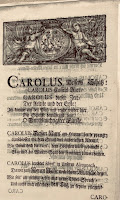Good luck to all of you in 2020!
I say this every year but this year is special, I don’t know why, but something tells me that the solution to Bessler’s wheel will be found and demonstrated this year. There’s a feeling in the air that hints at impending success; whether it’s the global warming warnings and the need to find a quick way to resolve the excessive production of carbon dioxide gas; or the lack of any cheap, clean alternative to way of generating electricity, or the problems involved in storing it, I don’t know - but something tells me that this coming year, 2020, success will arrive and it will truly blow the minds of the opinion-makers, also known as “experts”.
The knowledge that they got it wrong for hundreds of years is going make thousands of opinion-makers try and correct enough printed text to make a pile of books that would stretch to the sun and back, not to mention rectifying the digital directives from those same people.
Keep at it guys, it’s going to happen this year, I feel it in my bones, and it could be you.
*********************************************************************************
And on another matter, my granddaughter Amy, who has her own crowdfunding site, aiming to raise enough money to fund her rehabilitation at the amazing STEPS centre, has announced that she can move her left thumb. Now that may not sound much, but considering that she has been unable move any part of her left arm and hand for more than a year, suffered excruciating pain in the whole arm, lost the use of her legs, been unable to sit up or support her head, been fed through the nose, suffered the indignity of a urinary catheter - she is beginning to make a number of improvements!
Here’s her mother’s post on the crowdfunding site today! (my daughter Jo.)
“ Well, thought I would share the news with you all - Amy can now move her left thumb. The signal from her brain to her left thumb is now being sent and received......after more than a year of trying to get control of her left hand, she has now re-established that ‘broken’ link. Here we are, staying in Sheffield for a few days, giving Amy a ‘Christmas Day’ away from home....If she can’t come home for Christmas, ‘home’ will come to her!
Thank you so much to everybody who has helped our daughter this year. I really do think that things will start to come together soon and that 2020 will be a major year in Amy’s journey towards recovery.
Please continue to support Amy and share this page far and wide to help raise awareness of CRPS, FND and PTSD.
Hope that you have all had a good Christmas and we wish you a Happy New Year too.
Love Jo (a very proud mum) xxxx
For YouTube link to same video see https://youtu.be/NmNORQal1sw
https://www.helpamy.co.uk/ https://www.gofundme.com/f/help-our-amy-to-walk-again
JC
Keep at it guys, it’s going to happen this year, I feel it in my bones, and it could be you.
*********************************************************************************
And on another matter, my granddaughter Amy, who has her own crowdfunding site, aiming to raise enough money to fund her rehabilitation at the amazing STEPS centre, has announced that she can move her left thumb. Now that may not sound much, but considering that she has been unable move any part of her left arm and hand for more than a year, suffered excruciating pain in the whole arm, lost the use of her legs, been unable to sit up or support her head, been fed through the nose, suffered the indignity of a urinary catheter - she is beginning to make a number of improvements!
Here’s her mother’s post on the crowdfunding site today! (my daughter Jo.)
“ Well, thought I would share the news with you all - Amy can now move her left thumb. The signal from her brain to her left thumb is now being sent and received......after more than a year of trying to get control of her left hand, she has now re-established that ‘broken’ link. Here we are, staying in Sheffield for a few days, giving Amy a ‘Christmas Day’ away from home....If she can’t come home for Christmas, ‘home’ will come to her!
Thank you so much to everybody who has helped our daughter this year. I really do think that things will start to come together soon and that 2020 will be a major year in Amy’s journey towards recovery.
Please continue to support Amy and share this page far and wide to help raise awareness of CRPS, FND and PTSD.
Hope that you have all had a good Christmas and we wish you a Happy New Year too.
Love Jo (a very proud mum) xxxx
See the very emotional video below, taken today!
For YouTube link to same video see https://youtu.be/NmNORQal1sw
https://www.helpamy.co.uk/ https://www.gofundme.com/f/help-our-amy-to-walk-again
JC




















